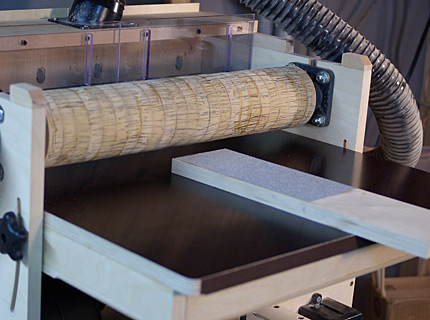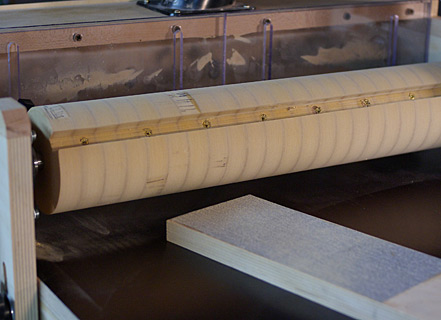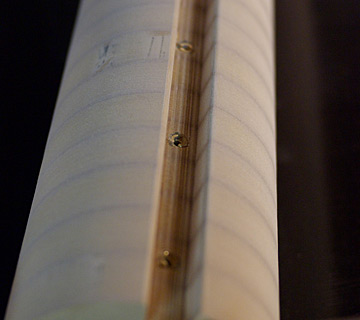Final Touches
 |
Our final assembly is the guard/dust shroud. I don't have a proper dust collector, so I have to make do with the shop vac which was generally fine on my old version but doesn't quite cut it on this larger beast. It does a pretty decent job but it needs help when the stock is much narrower than the width of the table. I built the shroud to have adjustable height panels in two sections so I can close half of it off and fine tune the height. If you have a decent dust collector or are building a narrower version you probably don't need to bother with this, just the fixed portion is fine. Set the height of the front when the table is all the way up and the back when the table is all the way down, because of the angle of the table it won't clear if you set the back based on what happens when the table is level. |
 |
Before we can put the machine to work we need to true up the drum. Mark up the surface of the drum with pencil or marker so you can see the low areas. Glue a piece of 80 grit to a piece of ply that is long enough to reach under the guard. MDF is nasty so do not even think about trying this without your dust collection set up. You should read the next section on operation before doing this since we're essentially operating the machine, just in reverse. |
 |
Make light passes with the sanding block and check your progress. Here I need to go a little bit more, but it's not necessary to get every last spec. |
 |
Once the drum is trued, use a sanding block to slightly round over the edges of the clamping slot. This allows the paper to tighten properly more easily and helps get the wedges started. It's trial and error getting the wedges to fit properly. They need to accomodate different thicknesses of paper for different grits, which is why our slot is deeper than our wedge. You may find after getting it to fit the coarsest paper you have to go back and thin the wedges on the bottom side to make them hold the finest grit. As luck would have it, you have a drum sander. |